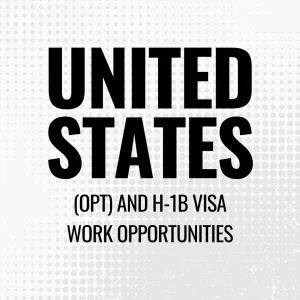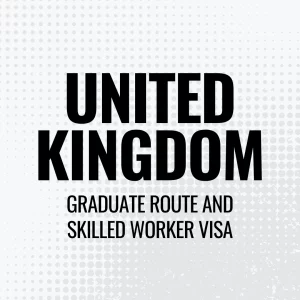Best Countries for Indian Students to Study Abroad in 2025
As Indian students set their sights on higher education abroad, the decision of which country to choose becomes a pivotal one, influencing their academic trajectory and career prospects. The year 2025 presents a landscape brimming with opportunities, with numerous nations vying for the title of the best countries to study abroad. This article aims to provide a comprehensive guide, spotlighting ten European countries alongside the USA, UK, Australia, New Zealand, Japan, and Singapore, each offering a unique blend of educational excellence, cultural diversity, and career prospects, ensuring Indian students have a wealth of top study destinations to consider.
 USA
USA
The USA remains a top choice for higher education abroad with many top universities, drawing Indian students with its prestigious institutions and innovative research opportunities. Universities like Harvard, MIT, and Stanford consistently rank among the world’s best, offering programs across a wide array of disciplines. The U.S. education system is renowned for its flexibility, enabling students to tailor their academic paths and gain exposure to various fields before specializing.
However, the high cost of tuition and living can be a significant consideration. Despite this, the U.S. job market offers promising career prospects, particularly in technology, finance, and healthcare, augmented by opportunities such as the Optional Practical Training program for international students. With its diverse culture and strong focus on academic excellence, the USA continues to be among the top study destinations for Indian students seeking a transformative higher education abroad experience.

United Kingdom
The United Kingdom, steeped in academic tradition and boasting world-renowned universities, continues to be a favored destination for Indian students seeking higher education abroad Institutions like the University of Oxford and the University of Cambridge hold esteemed positions in global rankings, offering a wide spectrum of programs in humanities, sciences, and engineering. The compact and concentrated nature of UK courses, with many top universities, often shorter than those in other countries, allows students to efficiently complete their degrees.
The UK’s educational environment, with many top universities, emphasizes critical thinking and research, preparing graduates for successful careers. Moreover, the availability of scholarships, including the Chevening Scholarship, helps to alleviate financial burdens. The UK also offers the Graduate Route visa, providing post-study work opportunities and contributing to its attractiveness as one of the premier study destinations.

Australia
Australia distinguishes itself as one of the best countries to study abroad, with many top universities and combining high-quality education with a unique lifestyle. Its universities, including the University of Melbourne and the University of Sydney, are globally acclaimed for their research and academic contributions. The country offers various courses from STEM to arts, catering to a wide array of academic interests.
Furthermore, Australia’s post-study work opportunities, facilitated through the Temporary Graduate visa, enable international students to gain valuable professional experience. The multicultural environment enriches the overall experience, ensuring that Australia remains one of the top study destinations, blending academic enrichment with personal and professional growth.

New Zealand
New Zealand has emerged as a prominent contender with many top universities among the best countries to study abroad, attracting international students with its distinctive blend of academic rigor and natural beauty. Renowned institutions such as the University of Auckland and the University of Otago offer internationally recognized programs, emphasizing practical, hands-on learning.
Compared to other popular study destinations, New Zealand presents a more affordable option in terms of tuition fees and living costs. Additionally, the country boasts a welcoming and inclusive environment, ensuring that international students feel supported throughout their academic journey. With opportunities for post-study work and a focus on innovation, New Zealand is increasingly recognized as a sought-after destination for higher education abroad.

Japan
Japan offers a compelling mix of cutting-edge technology, rich cultural heritage, and educational excellence, positioning it as one of the best countries to study abroad in Asia. Esteemed institutions like the University of Tokyo and Kyoto University provide world-class programs across engineering, science, and humanities. The Japanese government has made significant investments in attracting international students, offering several English-taught programs and scholarships.
While navigating a new language and culture can present challenges, studying in Japan offers an unparalleled opportunity to gain a global perspective and immerse oneself in a unique and technologically advanced society. Japan is quickly becoming recognized as a premier destination for higher education abroad.

Singapore
Singapore, with many top universities like NUS and Nanyang Polytechnic, stands as a beacon of academic excellence and multiculturalism, solidifying its place among the best countries to study abroad. World-renowned universities such as the National University of Singapore and Nanyang Technological University offer a wide array of programs in high-demand fields, including business, engineering, and technology. Singapore’s strategic position as a global hub for trade and finance presents unparalleled opportunities for internships and networking, enhancing students’ career prospects.
Moreover, the Singaporean government offers scholarships and financial aid, making it a feasible option for Indian students seeking higher education abroad. The city-state’s commitment to innovation, combined with its safe and cosmopolitan environment, makes it a top choice for those seeking to advance their careers on a global scale.

Switzerland
Switzerland, renowned for its high quality of life and prestigious educational institutions, offers a unique study abroad experience. Universities like ETH Zurich and the University of Geneva provide world-class programs, particularly in engineering, natural sciences, and business. While tuition fees can be considerable, Switzerland’s commitment to research and innovation, along with its central European location, makes it an attractive destination for those seeking a globally focused higher education abroad.

Netherlands
The Netherlands is recognized as one of the best countries to study abroad, particularly for its international focus and innovative approach to education. Universities like the University of Amsterdam and Delft University of Technology offer a diverse range of programs taught in English, attracting students from around the world. The Dutch emphasis on problem-solving and critical thinking, combined with its location in the heart of Europe, makes it a sought-after destination for those seeking to broaden their horizons through higher education abroad.

Ireland
Ireland, known for its rich cultural history and thriving economy, is increasingly becoming one of the best countries to study abroad, especially for Indian students. Universities like Trinity College Dublin and University College Dublin offer a high-quality education in a welcoming and safe environment. The country’s strong presence in sectors like technology, pharmaceuticals, and finance creates numerous internship and job opportunities for graduates. Ireland is cementing its position as a top-tier destination for higher education abroad with a growing number of international students.

Italy
Italy, with its rich historical heritage and world-renowned academic institutions, offers a unique and enriching study abroad experience. Home to prestigious universities such as Politecnico di Milano and the University of Bologna, Italy is celebrated for its programs in arts, humanities, architecture, and design. Its reasonably priced cost of living, coupled with a vibrant cultural scene, make it a delightful and accessible study destination. This confluence of factors positions Italy as one of the best countries to study abroad.

Canada
Canada is one of the best countries to study abroad, offering a blend of affordability, high-quality education, and welcoming immigration policies. Universities such as the University of Toronto and McGill University provide a wide array of programs that attract international students. Canada’s Post-Graduation Work Permit allows graduates to work for up to three years after completing their studies, enhancing its appeal as a top destination for higher education abroad.

Spain
Spain is an increasingly popular choice among Indian students seeking higher education abroad. Its rich culture, historical heritage, and internationally recognized universities, such as the University of Barcelona and the Autonomous University of Madrid, make it an attractive study destination. Spain offers a variety of programs, many of which are taught in English, and has a growing economy that provides opportunities for internships and career development. The reasonable cost of living and the chance to experience a vibrant European lifestyle further contribute to its charm as one of the best countries to study abroad.
In conclusion, the landscape of higher education abroad presents a diverse range of opportunities for Indian students in 2025. The best countries to study abroad are those that offer an ideal amalgamation of academic rigor, cultural diversity, career prospects, and overall quality of life. Whether it’s the technologically advanced environments of the USA and Japan, or the European charm of countries like Germany, France, and Spain, students have a multitude of options. By considering factors such as tuition fees, scholarship availability, post-study work opportunities, and personal preferences, Indian students can make informed decisions about their higher education abroad and embark on transformative academic adventures.
In making a choice between these great study destinations, each candidate should consider their unique academic goals, professional dreams and monetary constraints. The knowledge and experiences gathered during this educational journey will not only lead to career advancement, but also contribute to personal development, intercultural understanding and a worldwide perspective. In the end, the ideal choice is one that sets the stage for a future of academic excellence, professional success and life-long growth as a global citizen.















































